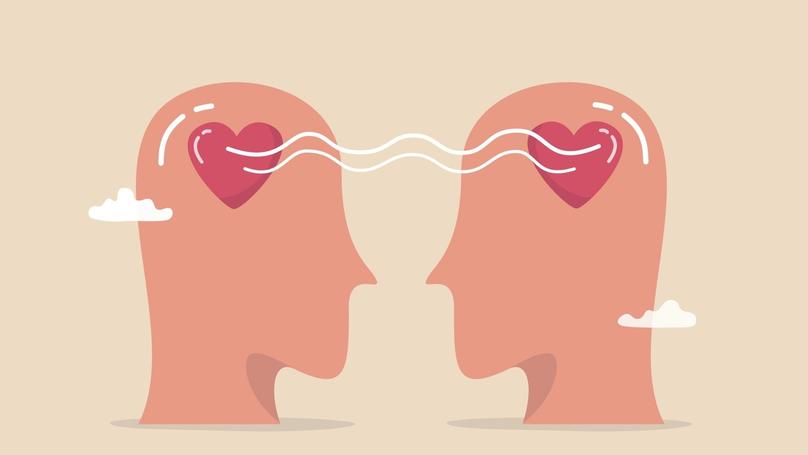Congruence

What is Congruence in psychology?
Congruence is the consistency and coherence of information transmitted by a person using verbal and non-verbal means. Simply put, it is a correspondence of a person's internal attitudes, views, and values and their external manifestations, i.e., behaviour and ways of expressing feelings and emotions. Thus, any manifestations - words, intonations, facial expressions, expressions, and gestures - should convey a single, coherent, consistent message.
Interestingly, the term congruence is used not only in psychology but also in other fields of knowledge. For example, this is the name for translating one figure to another in geometry. Thus, congruence broadly is equality, proportionality or correspondence of any object, process, or phenomenon to another.
Simultaneously, in psychology, congruence also implies the process of realising, identifying and accepting one's true sensations and physical and mental states. In this case, a person refuses to use defence mechanisms psychological and social masks. However, this does not mean blindly following impulses; congruence by default implies an adequate and lawful expression of emotions while respecting ethical, cultural and social norms, moral principles and foundations.
People with congruence say what they think and act according to personal interests, motives, and beliefs. They do not allow external circumstances to influence their self-perception and worldview. It enables them to be in harmony not only with themselves but also with their surroundings. Moreover, once you realise how you feel and what you want, making decisions that previously seemed extremely difficult becomes more straightforward, and your self-esteem, self-confidence, and motivation to be active increase. In contrast, the existing inconsistency between the internal state of a person and his external manifestations leads to stress, dissatisfaction and unresolved conflicts.
How Congruence Appeared in Psychology
The American psychologist Carol Rogers introduced the term congruence and the corresponding theory of its necessity and is one of the founders and leaders of humanistic psychology in the middle of the last century. Then, the scientist first used it to describe his methodology of practical psychology, namely, person-centred therapy. It involves harmonising the disturbed system of relations between a person and the world around him, correcting his emotions and thoughts.
The goal of such a technique is that the patient, independently, albeit under a psychologist's guidance, could find internal and external balance. To achieve this, the therapist must first and foremost be congruent and not appear to be an aloof academic. Thus, along with empathy, congruence has become a prerequisite and key to effective psychotherapeutic contact, facilitating positive changes in the patient's feelings, attitudes and behaviour.
Congruence VS Empathy

Congruence and empathy have similar features and common constituent components, but these terms are usually considered autonomous in psychology. Thus, empathy implies recognising another person's emotions and feelings, understanding their inner state, and reacting competently to external manifestations. In other words, it is a conscious empathy with the current emotional state of your interlocutor.
It is the crucial difference between empathy and congruence - both these phenomena involve identification, understanding and reflection of feelings in behaviour, but if congruence means accepting your own emotions, empathy, respectively, the feelings of others. Therefore, congruence directly reflects on your state of being, while empathy defines the ability to read others.
Interestingly, congruence can easily be confused not only with empathy but also with the concept of mindfulness. Moreover, although related, mindfulness does not involve broadcasting your thoughts and feelings to others. Unlike congruence, it merely allows you to recognise and control your reactions.
The term authenticity, in turn, is defined as a person's ability to be themselves and to reject social roles, stereotypes and stigmas imposed on them. However, authenticity emphasises sincerity rather than the obligatory awareness of feelings and motivations. Sincerity, however, is also considered an essential component of congruence. Even if you are an honest and open interlocutor, others may not always perceive you as such. Carl Rogers, the father of the concept of congruence, believed that a person cannot independently and adequately assess his congruence; the people around him determine it. That is why congruence is not so significant; it acquires meaning in a society and a human community.
The Importance of Congruence in Communication
Congruence is equally important both in professional activity and in everyday life. It acquires critical importance in the process of communication and interaction with people. After all, the more congruent a person's thoughts and feelings are with his words and non-verbal signals, the more likely he will be understood and accepted by his interlocutors.
A person with congruence will not be accused of manipulation, insincerity, or lying. In addition, with such an interlocutor, there is no need to interpret his words further or guess what they want to say. As a rule of thumb, even if one person in the communication has high congruence, all other participants will feel comfortable and safe maintaining an active, sincere dialogue. In the same way, you create a trustful, relaxed atmosphere, which is a healthy psychological climate for effective communication.
However, it is tough to measure congruence. It cannot be a permanent property of a person, congruence is not permanent and, therefore, is always relative and depends solely on the situation. Consequently, it is almost impossible to assess objectively how important congruence is for success. Nevertheless, in communication, it contributes to:
- The establishment of trust between interlocutors.
- Clarity of communication.
- A closer emotional connection.
- Respect and thereby strengthen relationships.
- It is important to be congruent in everyday activities as well.
It will allow you to:
- Express oneself competently and always be understood appropriately;
- Adhere to personal values and beliefs;
- Not to react to provocations from others;
- Assert personal boundaries and not to be manipulated;
- Understand one's own needs and motives;
- Remain calm and balanced even in the most stressful situations.
Examples of Congruence

As a rule, a congruent person is self-confident and quickly makes decisions. They are characterised by decisiveness, have an active life position and successfully move up the career ladder, following their attitudes and goals. However, you can also express congruence in everyday trifles, unnoticeable at first glance. For example, if you prefer to visit the same coffee shop, you will most likely be greeted by a friendly barista with a sincere smile. In such a situation, the coffee house employee has a developed congruence, loves his work, strives to do it well, and transmits it to his clients and visitors to the institution. They sense this sincerity and respond by increasing their loyalty to this coffee house.
People with a high level of congruence attract the attention of others and quickly find a common language, even with strangers. So, if a young man likes a girl, he, despite his shyness, will get acquainted with her and share his feelings because there is nothing terrible in this at all.
At the same time, congruence implies the manifestation of positive emotions and an ecological expression of negative ones. For example, if one of the team members does not agree with their manager's opinion, they won't be afraid to express their own, justifying the opposite point of view. Moreover, if they decide to keep silent and "keep their head down", suppressing certain feelings, then they lack congruence.
What is incongruence? Here are Some Examples.
Incongruence implies a state of disagreement with oneself, internal conflict, and a mismatch between our ideal and authentic selves. Psychologists call non-congruence the discrepancy between a person's experience and their self-perception. Incongruence between consciousness and the message broadcast means a person expresses something other than what they feel, think or experience. Often, it is viewed as lying, insincerity, or dishonesty. However, the person may not even be aware of their incongruity.
For example, when participating in a discussion, your colleague is shouting, gesticulating and waving his hands; his face is red, and his forehead is sweating. In response to your request to calm down and not get angry, he claims in bewilderment that he is pretty calm and focused. It means the person was unaware of his incongruent behaviour and did not notice his anger, assuming he was colourfully making his point. At the same time, his non-verbal cues were considered aggressive and even dangerous by those around him.
On a par with congruence, its absence can manifest itself every day. For example, a person may not be congruent in answering the banal question, "How are you?" As a rule, most people answer "Fine" without even considering how far such an answer is from the actual state of affairs. Or maybe the interlocutor did not think it necessary and consciously decided not to verbalise the actual state of mind.
There are many reasons why we can be incongruent. For example, if a person joins a new team or a friendly company, he wants to make a good impression on everyone around him, so he behaves differently than he feels inside. Another reason for this behaviour may be a conscious desire to appear to others, not as we do in real life. However, constant play quickly tires us out, makes us tired and irritated, and, over time, causes chronic stress.
How to Develop Congruence

Achieving a high level of congruence and manifesting it regardless of external circumstances is possible with the help of the development of awareness. The idea is to be aware of sensations happening here and now and to focus only on them. Special techniques for mindfulness will teach you to listen to yourself, track your feelings and thoughts in the present moment, analyse them without evaluation and express them competently.
One such technique is meditation. In this case, meditative practices are devoid of religious overtones and are aimed exclusively at finding inner harmony and balance with oneself and the surrounding world. The most universal is called "sultana" meditation. For its realisation, it is necessary to take in the hand a small object, such as a sultana or something else. Then, you should close your eyes and concentrate only on this object. Feel its shape and texture. Do not forget that you should pay attention to tactile sensations, smell, and all the impressions that arise. Try to use your senses to fully explore what you hold in your hand and enjoy the process of such contemplation. It will help you abstract from the outside world and concentrate on yourself, your thoughts, and your feelings.
It is equally important to breathe properly during the meditation process. For this purpose, try the techniques of controlled and conscious breathing and popular methods such as square breathing, the 4-7-8 method and many others. The simplest method for learning to breathe quickly and effectively looks like this: sit back, straighten your back and put your feet straight in front of you. Next, close your eyes, make sure you are not disturbed by anything, and focus on your inhalations and exhalations. Your thoughts will probably start rushing around, ideas will actively appear, and memories will keep you awake. Try to abstract yourself from this and focus all your attention on breathing. You can put your hand on your abdomen or chest to better feel and control yourself, as well as inhalations and exhalations. Such a conscious approach to breathing allows you to develop mindfulness and concentration, achieve peace, and stop and "exhale" accumulated negative emotions.
Keeping a diary of your emotions will help in the development of congruence. This independent therapeutic tool allows people to keep track of their thoughts and feelings, facilitate their interpretation, better understand themselves, and control impulses and emotional outbursts. To do this, during the day, write exciting ideas that arise in your diary, thoughts that require reflection, feelings, and physical and mental sensations you experience at any given moment. When you notice that you are in a particular state, feel a new emotion, or experience an unexpected state, stop and exhale, and then record it by answering questions like the following.
- What am I Feeling Right Now?
- Why did this feeling arise? What was the trigger?
- Why am I experiencing this particular feeling?
- Do I enjoy experiencing it?
- What can I do to change the situation?
Written practice will significantly facilitate controlling your feelings, prompt you to identify them correctly, and help you analyse your emotions and express them competently to others.
SWOT analysis is another effective tool of self-analysis, which will help you realise your strengths, open new perspectives and develop congruence as such. This model considers four main characteristics and is deciphered as S - Strengths, W - Weaknesses, O - Opportunities and T - Threats. So, with the help of SWOT analysis, one can assess:
- Personal strengths, advantages, and advantages over others help achieve the goal. These can be personality traits such as empathy, creativity, and communication skills, as well as knowledge, expertise, professional skills and competencies.
- Weaknesses and shortcomings. We can't be good at everything. We all have vulnerabilities and weaknesses that we must work on.
- External circumstances. It is the state of affairs we have at a given moment. As a rule, it is not easy to change these circumstances, but you can use them for good.
- External threats. For example, many risks await you when you move up the career ladder or create a family. Avoiding or isolating yourself from such external threats altogether is impossible, so you should always be prepared for them.
Such analyses also serve as an excellent tool for self-reflection, which will help you develop healthy self-esteem, self-confidence and self-respect. At the same time, the SWOT technique is designed to identify the positive aspects of your character and personality and to recognise your shortcomings, which you should try to eliminate or at least minimise their impact. Thus, SWOT analysis involves both the assessment of the current state of affairs and the drawing up of a plan for further development and improvement in the future. For this process to proceed efficiently and painlessly, such a methodology provides for studying external circumstances and possible threats and developing an effective algorithm of actions to overcome obstacles and avoid risks on the way to the goal. Therefore, you can use SWOT analysis in moments or life periods when you feel the need for reflection, systematisation of life experience, searching for new opportunities, and setting further goals. All this will allow you to understand yourself and realise the values, principles, and priorities that you follow.
Thus, the above self-development tools will help you quickly learn to notice your psychological changes and stay in contact with yourself and the world around you while maintaining balance and harmony. Equally important is that all such techniques develop conscious and critical thinking, contributing to the destruction of stereotypes and stigmas rooted in consciousness, dictated by internal conflicts and psychological defences.
However, it is equally essential to maintain and constantly improve your level of congruence. To do this, regularly use self-development and mindfulness practices, pay attention to your mental and physical health, continually remind yourself of this and do not be afraid to be open to the world because only then will it open for you in return!























